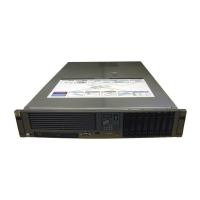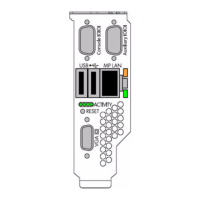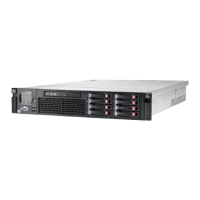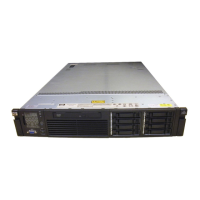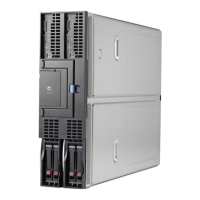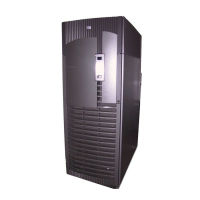Chapter 4
Utilities
Management Processor Command Interface
63
Notice this is roughly the equivalent to turning the system power off at the front panel switch. There is no
signal sent to the OS to bring the software down before power is turned off. To turn the system off properly.
you must ensure that the OS is in the proper shutdown state before issuing this command. Use the proper OS
commands or use the graceful shutdown option of the Remote Power Control command.
Configure Paging
PG: Paging parameter setup—configures pagers
This command allows the user to configure the pagers and set triggering events.
A string description of the triggering event will be sent with the page.
Power Status
PS: Power status—display the status of the power management module
This command displays on the console the status of the power management module.
Reset BMC
RB: Reset BMC
This command resets the BMC by toggling a GPIO pin.
Reset System
RS: Reset system through RST signal
IMPORTANT Under normal operation, shut down the OS before issuing this command.
This command causes the system (except the MP) to be reset through the RST signal.
Execution of this command irrecoverably halts all system processing and I/O activity and restarts the
computer system. The effect of this command is very similar to cycling the system power. The OS is not
notified, no dump is taken on the way down, and so on.
Set Access
SA: Set access options—configures access for LAN and remote/modem ports
This command will disconnect modem, LAN, and web users if access is disabled.
Create Local Session
SE: Log into the system on local or remote port
Only valid from the local or remote/modem port, SE allows the user to leave the MP Command Interface and
enter a system session. Other mirrored MP users are placed in console mode. The session user returns to the
mirrored MP session on exit.
The MP regularly checks the activity of the session, closes the connection with the system, and, if the timeout
period has elapsed, returns the port to mirroring. The timeout period is set with the IT command. On HP-UX,
the SE command works on the local and remote ports.

